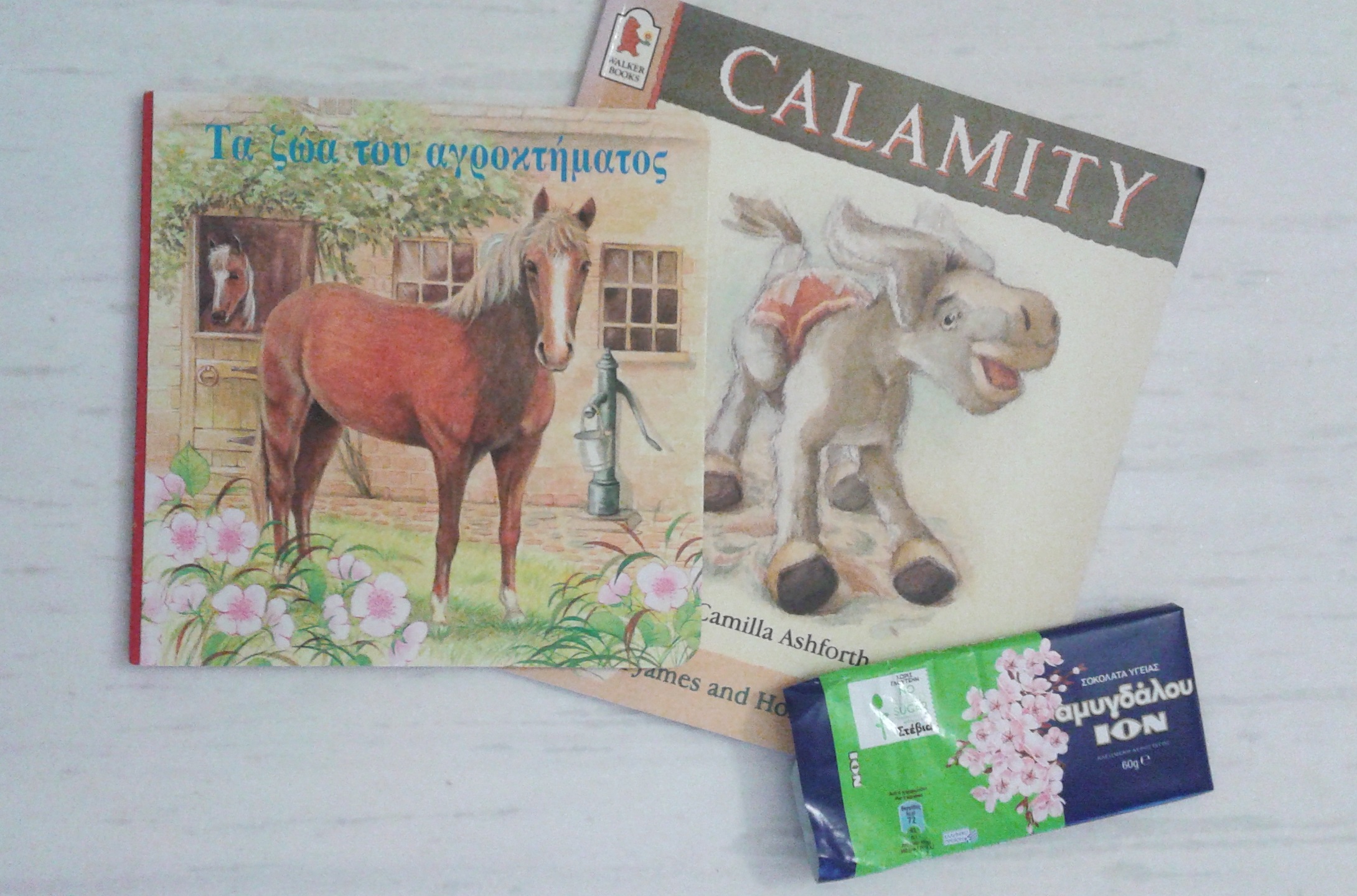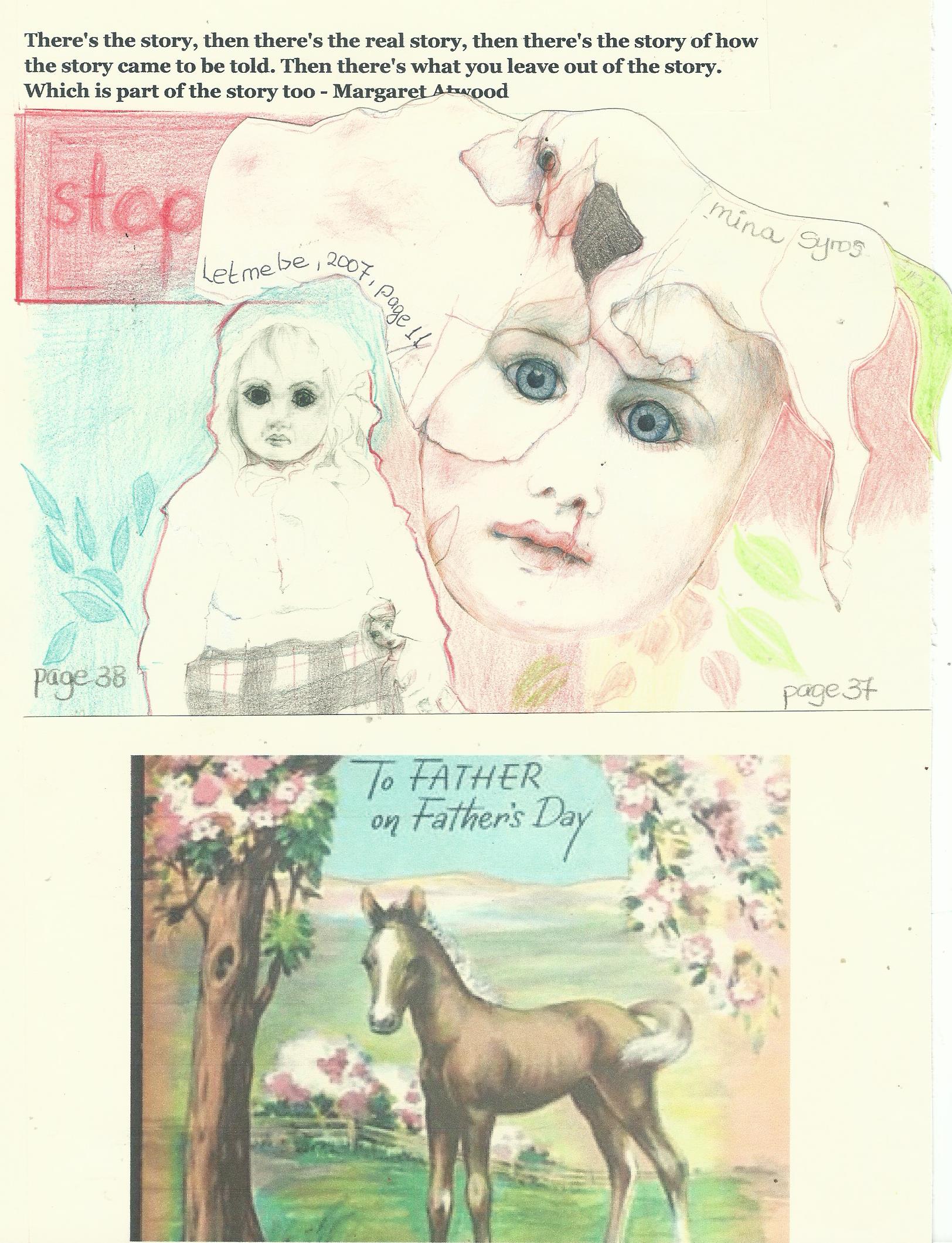Horses (edited)
‘It is good people who make good places’ by Anna Sewell from Black Beauty
 Animals often appear in our art and dreams and they can be naturalistic depictions or allegories and metaphors, symbols and containers of story and emotional reality. Our imagery and art products can become containers for our individual, as well as, collective, layered inner experiences. The animal imagery that arises and gets constructed may be pertinent to different contexts and ages, and also, the residue of stories we have read and heard, films we have watched, art we have been exposed to or symbols and metaphors related to our lived experience and products of our incredible imagination. We may identify with their traits and qualities. Additionally, the same image can represent multiple ideas often seemingly unrelated and even conflicting. So, horses could represent freedom, grace, power, intelligence, movement, but they have been associated with evil and goodness (black and white), our human potential for good and bad, our conscious and unconscious mind, the explicit and the implicit, our shadow, and so on. They also take me back to Black Beauty, The Horse Whisperer, The War Horse, westerns, Plato’s allegory and Greek mythology, a photo of my grandmother on horseback, childhood experiences and drawings and a lot more. Where I live there aren’t that many horses, but occasionally, I have encountered one of these majestic creatures galloping on the beach or wading in the sea. In those moments I can almost see the plump six year old in me clinging to her scruffy doll almost mesmerized by the spectacle…
Animals often appear in our art and dreams and they can be naturalistic depictions or allegories and metaphors, symbols and containers of story and emotional reality. Our imagery and art products can become containers for our individual, as well as, collective, layered inner experiences. The animal imagery that arises and gets constructed may be pertinent to different contexts and ages, and also, the residue of stories we have read and heard, films we have watched, art we have been exposed to or symbols and metaphors related to our lived experience and products of our incredible imagination. We may identify with their traits and qualities. Additionally, the same image can represent multiple ideas often seemingly unrelated and even conflicting. So, horses could represent freedom, grace, power, intelligence, movement, but they have been associated with evil and goodness (black and white), our human potential for good and bad, our conscious and unconscious mind, the explicit and the implicit, our shadow, and so on. They also take me back to Black Beauty, The Horse Whisperer, The War Horse, westerns, Plato’s allegory and Greek mythology, a photo of my grandmother on horseback, childhood experiences and drawings and a lot more. Where I live there aren’t that many horses, but occasionally, I have encountered one of these majestic creatures galloping on the beach or wading in the sea. In those moments I can almost see the plump six year old in me clinging to her scruffy doll almost mesmerized by the spectacle…

This post has sort of come about through listening to Zanaib Salbi talk about her new book and her reference to Plato’s chariot allegory. So, Plato (through Socrates) uses the allegory of the chariot to explain the tripartite nature of the human psyche. The chariot, the charioteer, and the white immortal and black mortal horses symbolize the soul. Plato’s allegory could probably be interpreted in a number of ways, as symbolic of the path to spiritual transcendence, personal growth and psychological health, balance and resilience to name but a few. The rider could be said to represent our capacity for Reason and love for wisdom and knowledge, the dark horse our appetites, destructiveness, greed, envy and love for gain and control, and the white horse our spirit nature, goodness and honorable life (thumos). One could perhaps sum it up to wisdom and knowing, pleasure and honor and goodness. When each force is wisely used it can lead to eudaimonia. However, the rider must understand his / her horses if he / she wishes to properly harness their energies. As riders we can mess up either by failing to hitch one of the horses to the chariot or by failing to bridle a horse. So we are not meant to ignore certain aspects of our psyche or experience, but rather acknowledge and embrace it all, and find balance, since each horse has both strengths and weaknesses.
The metaphor is also powerful in describing the two forces in our human psyche – our drive for good, and also our potential for evil. The white horse may tell us that there is room for all living creatures and that everyone has been granted the right to live in peace and become on this planet,because we are all children of God or the Universe, but then the dark horse starts kicking and yelling that there is scarcity and that it’s okay to push and shove and grab and rob and rape and blow out other people’s candles and rooftops. If these two drives are not integrated the black horse can totally derail us or dominate our choices and decisions. It also seems a good metaphor for our conscious and unconscious experience or mind. Similarly, too much unintegrated, and therefore, mostly unconscious material like wounds, insecurities and conditioning can result in the black horse setting us off course and undermining our life while we are blissfully under the impression that we are being drawn only by our good intentioned and honorable white horse. The black horse could be viewed as our Shadow, the parts of us that we are not fully aware of or that we have disowned, dissociated or rejected. The dark horse could be the container of transgenerational baggage that we often unconsciously pass on to the next generation at an individual and collective level, and so old ways not serving humanity anymore are maintained. If we have not seen the good, the bad and the ugly in us we are prone to unwillingly projecting it on others. If we have not seen, healed or made peace with our wounds, losses, fears and insecurities, our own failings and wrong doings, our regrets, underlying emotional reality and our conditioning than the black horse is bound to stand on its hind legs every so often. The white horse is bound to get derailed, jump off a bridge or maybe get hit by a truck if the black horse is unacknowledged and doing its own thing. In order for us to be drawn by the white horse we need to keep an eye on and hold the reigns of the darker one as well. Not acknowledging our fears or minimizing darkness and constructing a Barbie like world does not eradicate the badness or the feared. I can attest to that. It is wiser and safer to live from a place of knowing because it provides room for more informed and empowered choices.
Non integration of our shadow not only impacts our choices and the way we go about our life, but also allows others to control, manipulate and cause us harm. Others can push the buttons of our psyche because our fears and insecurities and blind spots are visible like shiny buttons on a shirt or girly blouse. It is as if others have a list of all our weak spots, yearnings, early mishaps and what can potentially trigger us. At this point, I think I might provide a personal example of how being relatively unconscious can allow others to not only hurt us, but discourage us from doing our thing. Journal writing among other things has been frowned upon and has been met with resistance to say the least in my environment across time. It was only in my forties that I overcame early injunctions and took up journaling again as part of processing trauma and also studying psychology. In any case, at some point people with whom I had never discussed my writing habits or diaries started making references to my writing and diaries and worst of all diary entries. Ignorant comments about the use of the less dominant hand or free writing and not necessarily always writing from the I perspective, and also, on content made me feel sort of bare and too permeable. It also invariably made me feel anxious and eventually less willing to engage with writing. It brought up fears to do with privacy and freedom; however, for a long time I never went beyond that. I certainly did not tap into my anger, and thus, I did not get to ask myself and others the right questions and do the necessary boundary setting and take measures to safeguard my privacy. I did not linger long enough on my emotional reality and the discomfort these comments were causing for a variety of reasons, ignorance of how to go about it being one, fear and denial another and so on. I stayed with the surface discomfort, but could not delve deeper. I have by now found that it is always worth meditating on uncomfortable experience and sitting with or tapping on our emotions even if we have to sweat or cry our way through them, even if we have to fall on our knees. Having said this I also know that timing and readiness and self care and support are also very, very important. Therefore, owning our shadow not only allows us to align more to who we truly are, but also protects us because it is not as easy for others, whether they are people in power or simply our kin, colleagues and friends, to manipulate our fears and wounds if we have already seen and even made them visible for others to see. Owning our shadow means that we have seen ourselves and others and have felt emotions that we may not want to and we have shed light on some of our blind spots. Once this happens other people have less hold on us, which leaves room for more ethical and prolife choices and actions, but also capacity to protect ourselves and others. When we collect the courage to stay with our own stuff we also tap into our common humanity and the fact that we are all swimming in the same universal soup, connected in more ways than we probably know. We also then have more choice to set boundaries, sever what is not serving us anymore, let go of what needs to die or forgive.
